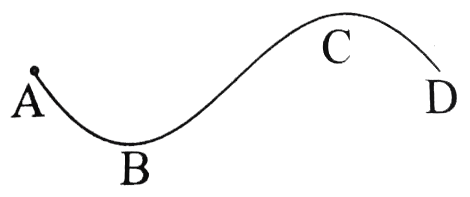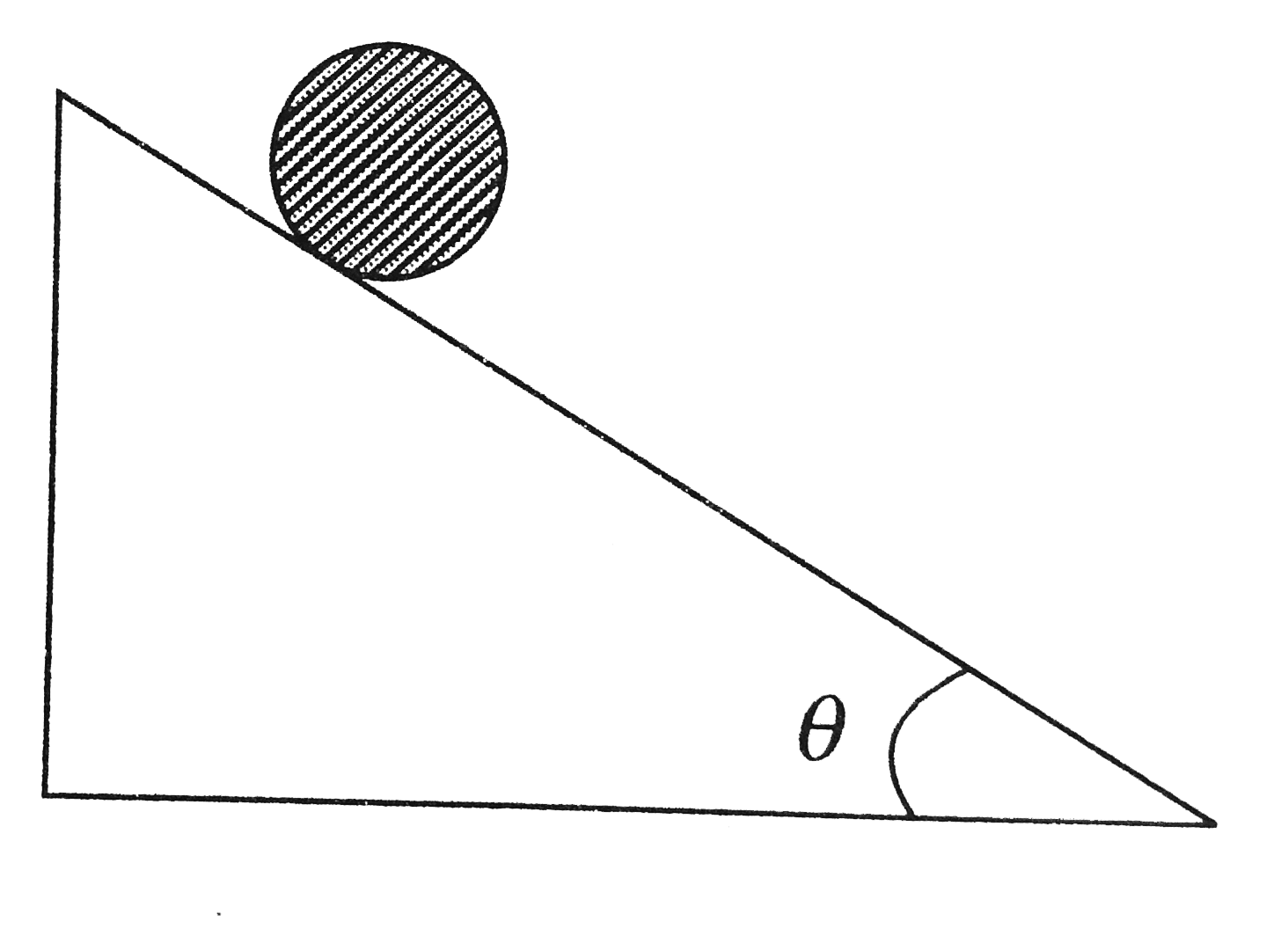
A curved suface is shown in figure. The portion BCD is free of friction. There are three spherical balls of identical radii and masses. Balls are released from rest one by one from A which is at a slightly greater height than C.
Wioth the surface AB, ball 1 has large enough friction to cause rolling down without slipping, ball 2 has a small friction and ball 3 has a negligible friction.
(a) For which ball is total mechanical energy conserved?
(b) Which ball(s) can reach D?
(c )For ball which do not reach D, which of the balls can reach back A?
(a) As ball 1 rolls down AB without slipping, friction is large enough to cause only rotation motion. However, no energy is lost due to friction. Ball 3 has negligible friction. Therefore, total mechanical energy is conserved in case of balls 1 and 3. Small friction in case of ball 2 involves some dissipation of energy. (b) Ball 3 alone can cross over C (lower than A ) and reach D as it has negligible friction. Ball 1 acquires some rotational energy and ball 2 loses some energy overcoming friction. They cannot reach D. (c) Balls 1 and 2 turn back before reaching C. Ball 2 cannot reach back to A on account of frictional losses. Ball 1 cannot roll back to A because of kinetic friction.
Topper's Solved these Questions
- WORK, ENERGY AND POWERBOOK - PRADEEPCHAPTER - WORK, ENERGY AND POWEREXERCISE - Advanced Problems For Competitions
20 Videos
- WORK, ENERGY AND POWERBOOK - PRADEEPCHAPTER - WORK, ENERGY AND POWEREXERCISE - NCERT EXERCISES WITH SOLUTIONS
30 Videos
- WORK, ENERGY AND POWERBOOK - PRADEEPCHAPTER - WORK, ENERGY AND POWEREXERCISE - Short Answer Question
52 Videos
- THERMODYNAMICSBOOK - PRADEEPCHAPTER - THERMODYNAMICSEXERCISE - Assertion- Reason Type Questions
19 Videos
Similar Questions
There are 2 identical white balls, 3 identical red balls and 4 green balls of different shades. The number of ways in which they can be arranged in a row so that atleast one ball is separated from the balls of the same colour, is :
View SolutionA cannot ball and a marble ball roll from rest down an incline. Which goes to the buttom first ?
View Solution
Knowledge Check
A ball released from rest from the roof of a building of height 45 m at t = 0. Find the height of ball from ground at t = 2s.
A10 mB20 mC25 mD30 mA homogeneous ball is placed on a plane making an angle θ with the horizontal. At what values of the coefficient of friction μ the ball roll down the plane without slipping ?
 .A≥27gtanθB≥25gtanθC≥23tanθD≥34tanθ
.A≥27gtanθB≥25gtanθC≥23tanθD≥34tanθA friction wire AB is fixed on a sphere of radius R. A very small spherical ball slips on this wire. The time taken by the ball to slip from A to B.
 A2√gRgcosθB2√gRcosθgC2√RgDgR√gcosθ
A2√gRgcosθB2√gRcosθgC2√RgDgR√gcosθ
Three metallic spherical balls of radii 3 cm, 4 cm and 5 cm are melted and recast into a big spherical ball. Find the radius of this big ball.
View SolutionAssuming a ball of mass m and of radius r to roll down from the top without slipping. Neglect energy losses due to rolling friction.
View SolutionA spherical ball of lead has been melted and meade in to smaller balls of half the radius of the original one. How many balls can be made?
View SolutionA bag contains 6 red balls and 10 green balls. 3 balls are drawn from it one by one randomly without replacement. If the third ball drawn is red, then the probability that first two balls are green is:
View SolutionIf a body (ball) is rolling on a surface without slipping, no frictional force acts on it
In the case of rolling without slipping point of contacts are relatively at rest.
View Solution
